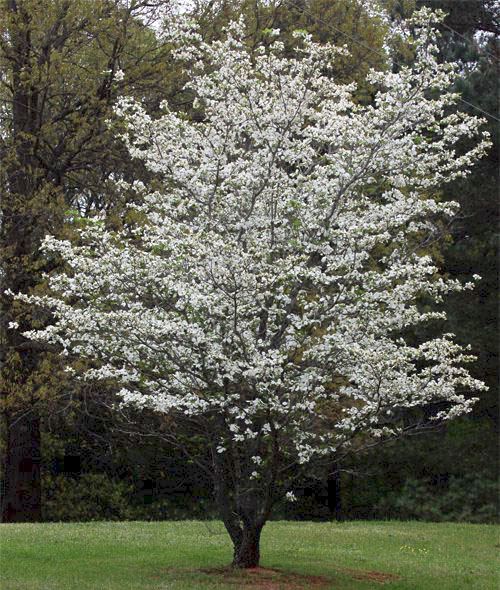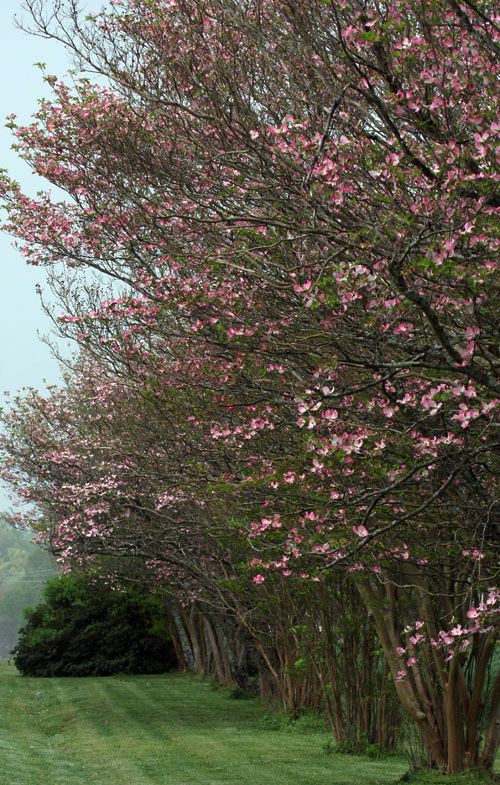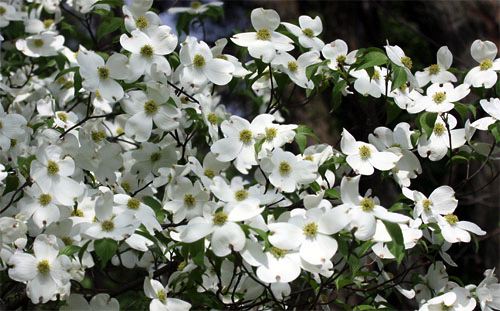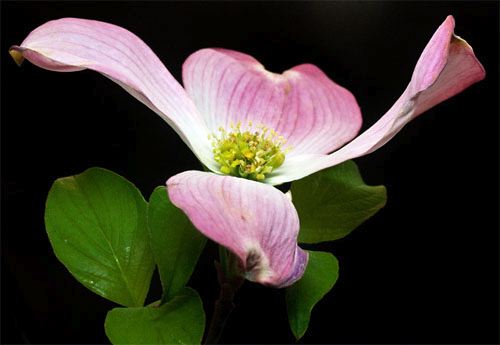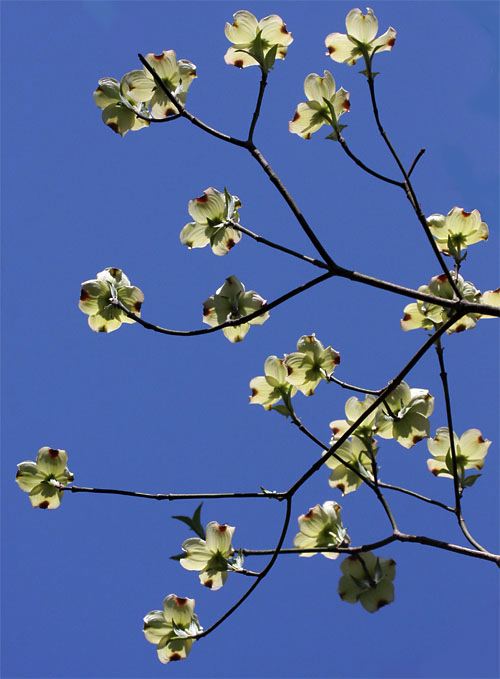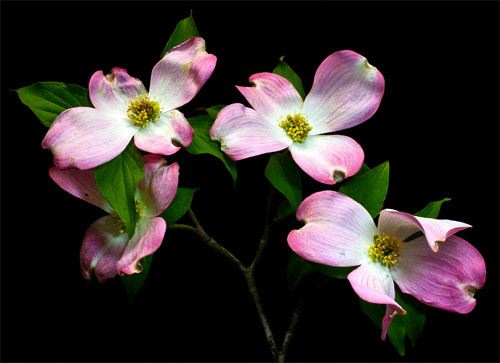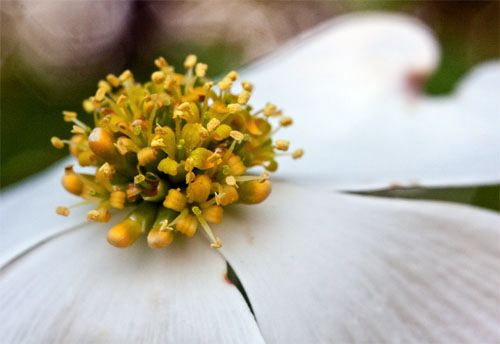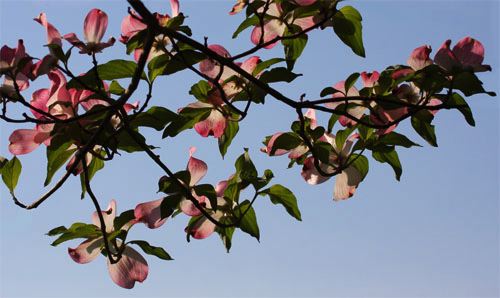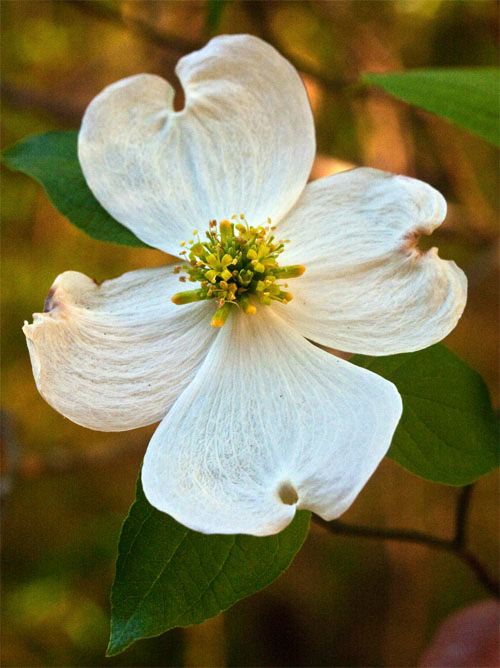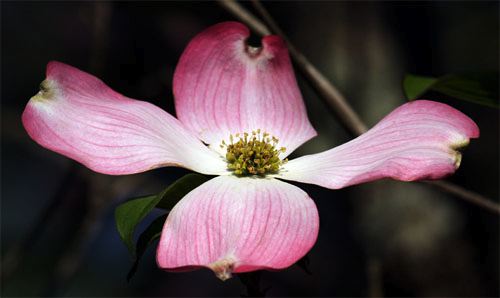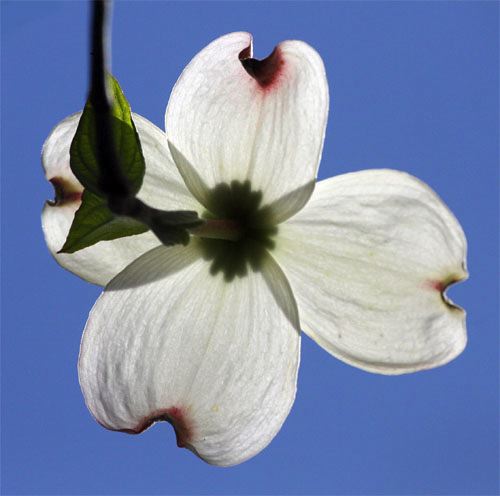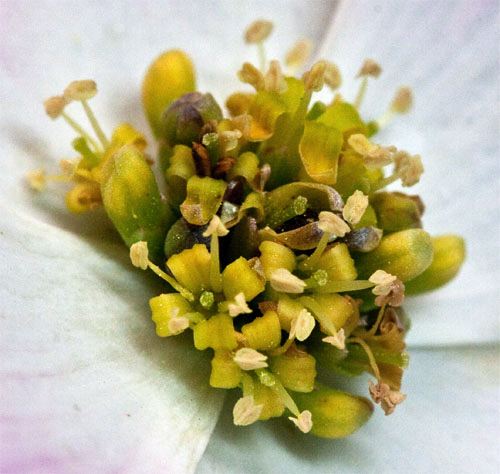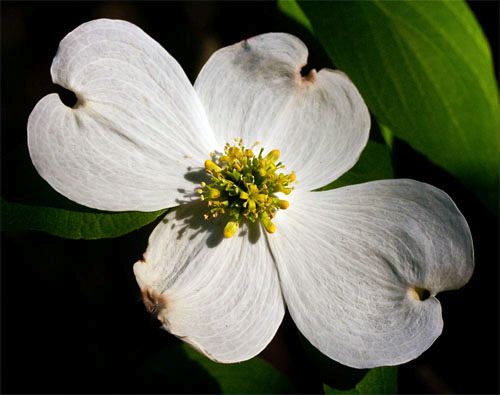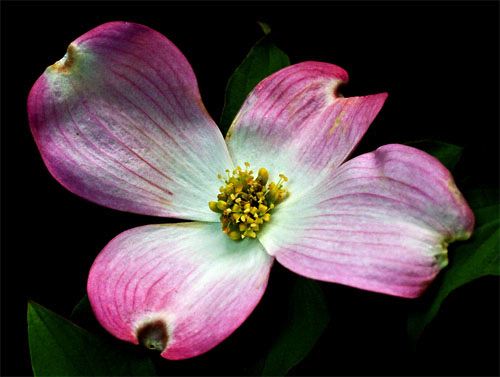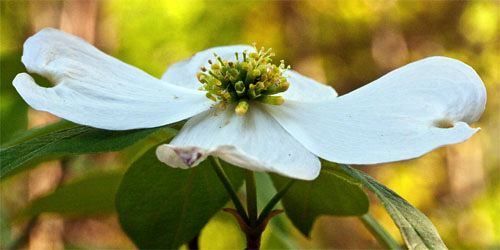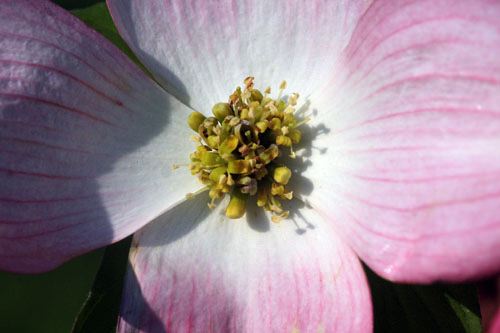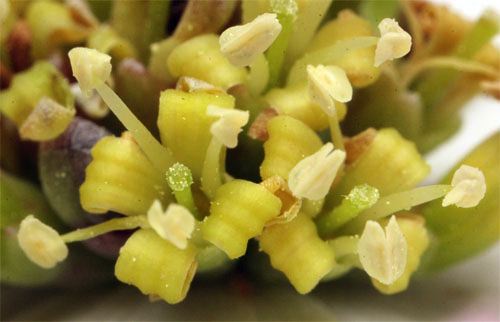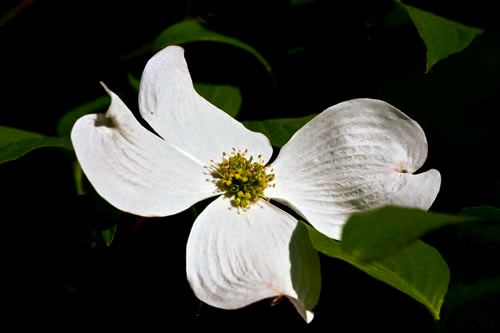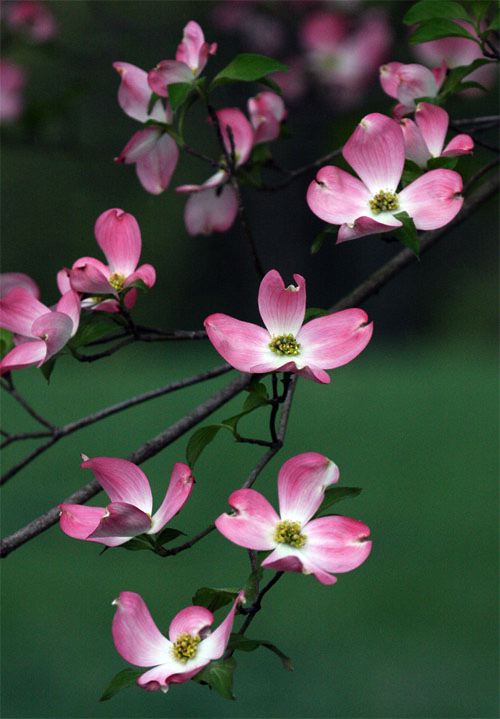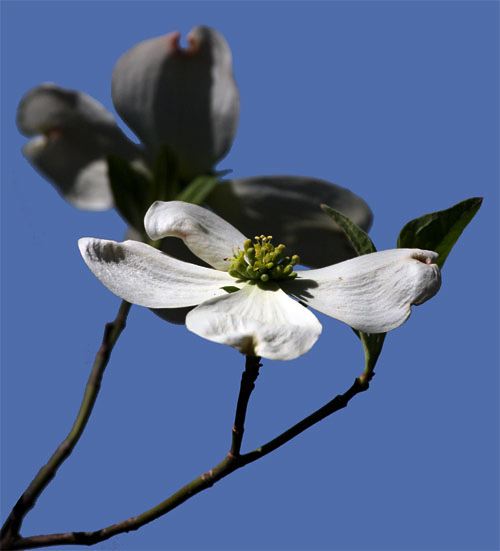|
|
|||
|
(Back to Preceding Week; on to Next Week) |
|
All text & photos © Hilton Pond Center FLOWERING DOGWOOD REVISITED: Although this year's spring season arrived officially at 1:32 p.m. EDT on 21 March (the vernal equinox), around Hilton Pond Center warm days got sap flowing in trees and shrubs long before then. By early March terminal buds began to swell--but, heck, Red Maples were blooming in late February, and Eastern Redbuds weren't far behind! Regardless of those early flowers or the calendar date, spring for us doesn't truly begin until our Flowering Dogwoods start earning their name. Like many folks, we're delighted by the appearance of dogwood blossoms and our aesthetic appreciation for these harbingers of spring is uncluttered by scientific facts. At times like this it matters not that dogwood's big, showy white structures (above, but sometimes pink, below) are actually bracts--four modified leaves that surround a central cluster of less obvious yellow flowers. In spring, we simply soak up the splendid show dogwood trees provide, not bothering with knowledge it is the little yellow blossoms that will form bright red dogwood berries come autumn--but only if this spring those white bracts attract attention of pollinators at the same time they're pleasing the eyes of us humans. Such details are important of course, but we never tire of simply looking at or photographing Cornus florida, so this week we offer a portfolio of images that--we hope--reveals the spring essence of Flowering Dogwood.
All text & photos © Hilton Pond Center A row of alternating Pink Dogwoods and Crepe Myrtles (above) makes for a striking display along the shoulder of U.S. 321 just south of York SC.
All text & photos © Hilton Pond Center Individual dogwood trees show great variability in flower density; some bear scarcely any blossoms while others (above) have branches that nearly sag from bracts and blooms.
All text & photos © Hilton Pond Center Pink Dogwoods occur naturally and are the same species as white one--Cornus florida--but thebpinkest ones have been selected and cultivated for exhibiting more red pigment in their bracts.
All text & photos © Hilton Pond Center In white dogwoods (above), the red pigments--carotenoids and anthocyanins--are limited primarily to spots at the tips of each bract.
All text & photos © Hilton Pond Center Historically, Flowering Dogwood occurred only in eastern North America, from southern Ontario and Maine south to northern Florida, and west to Illinois and eastern Texas. (A disjunct population occurs in Mexico.) Elsewhere, they are ornamentals.
All text & photos © Hilton Pond Center Dogwoods are "gametophytically self-incompatible," meaning a tree can't pollinate itself; thus, animal pollinators such as bees, flies, and small beetles are required. (Honey Bees help, but not much.)
All text & photos © Hilton Pond Center The 40-plus species of dogwoods (Cornus spp.)--with one Peruvian exception--are all native to the Northern Hemisphere and occur in North America, Europe, Asia, and North Africa. (Another 70 family members are in different genera.)
All text & photos © Hilton Pond Center There's a great deal of variability in bract shape among dogwoods, and some individual trees like the one above have bracts that are much more delicate and translucent.
All text & photos © Hilton Pond Center Flowering Dogwoods are up-to-30-foot-tall trees of the understory; slow-growing and long-lived, they thrive in shade beneath canopy vegetation but sometimes do well as specimen plants in full sunlight.
All text & photos © Hilton Pond Center From below we can see there are no structures beneath the dogwood's white bracts (above); the actual flowers are all on the other side facing the sun.
All text & photos © Hilton Pond Center Just as there are four bracts in dogwoods, so are there four petals (above) and four stamens in each of the tree's tiny yellow flowers.
All text & photos © Hilton Pond Center Dogwood flowers tend to open one or two at a time (above) rather than simultaneously. This lengthens the flowering season and may guarantee better fertilization and seed set.
All text & photos © Hilton Pond Center The origin of the name "dogwood" is murky; some authorities say an astringent agent in the tree's bark was once used to cure dogs of mange.
All text & photos © Hilton Pond Center A more widely accepted explanation for the name "dogwood" is it derives from "daggerwood"--non-splintering sticks once used to skewer meat for cooking.
All text & photos © Hilton Pond Center Each individual dogwood flower (above) can make one red berry, or drupe, that has a thin layer of pulp surrounding one or two hard yellow seeds. Thus, in a dogwood berry cluster each fruit comes from a different flower.
All text & photos © Hilton Pond Center A dogwood flower's four curved stamens bear grains of pollen, some of which will be transferred by insects to the single, pale green pistil on another tree's blossom.
All text & photos © Hilton Pond Center The wood of Flowering Dogwood is dense and does not splinter, making it ideal material for products that need to be smooth, e.g., textile shuttles, machinery parts, tool handles, and engravers' blocks.
All text & photos © Hilton Pond Center Dogwood leaves are typically opposite, occurring in pairs along the length of the stems--which also are opposite. Foliage most often appears a week or more AFTER dogwood bracts and blossoms have begun to unfold.
All text & photos © Hilton Pond Center Indeed, Flowering Dogwoods--be they white or pink--may be the most eye-pleasing flora to be found at Hilton Pond Center and across the eastern U.S. In any case, we hope you enjoyed our portfolio of vernal inflorescence on these splendid native trees. Happy Spring!
|

